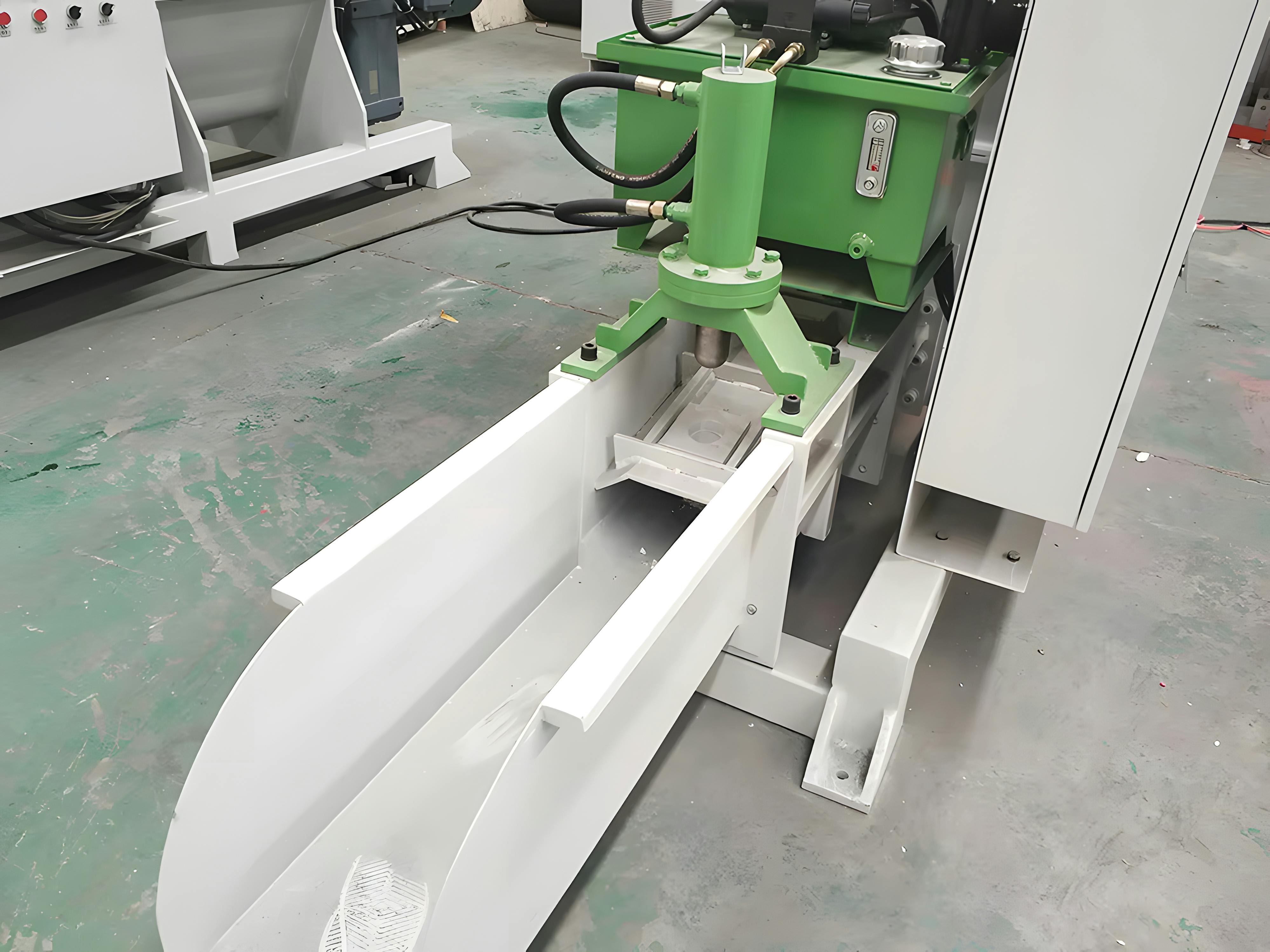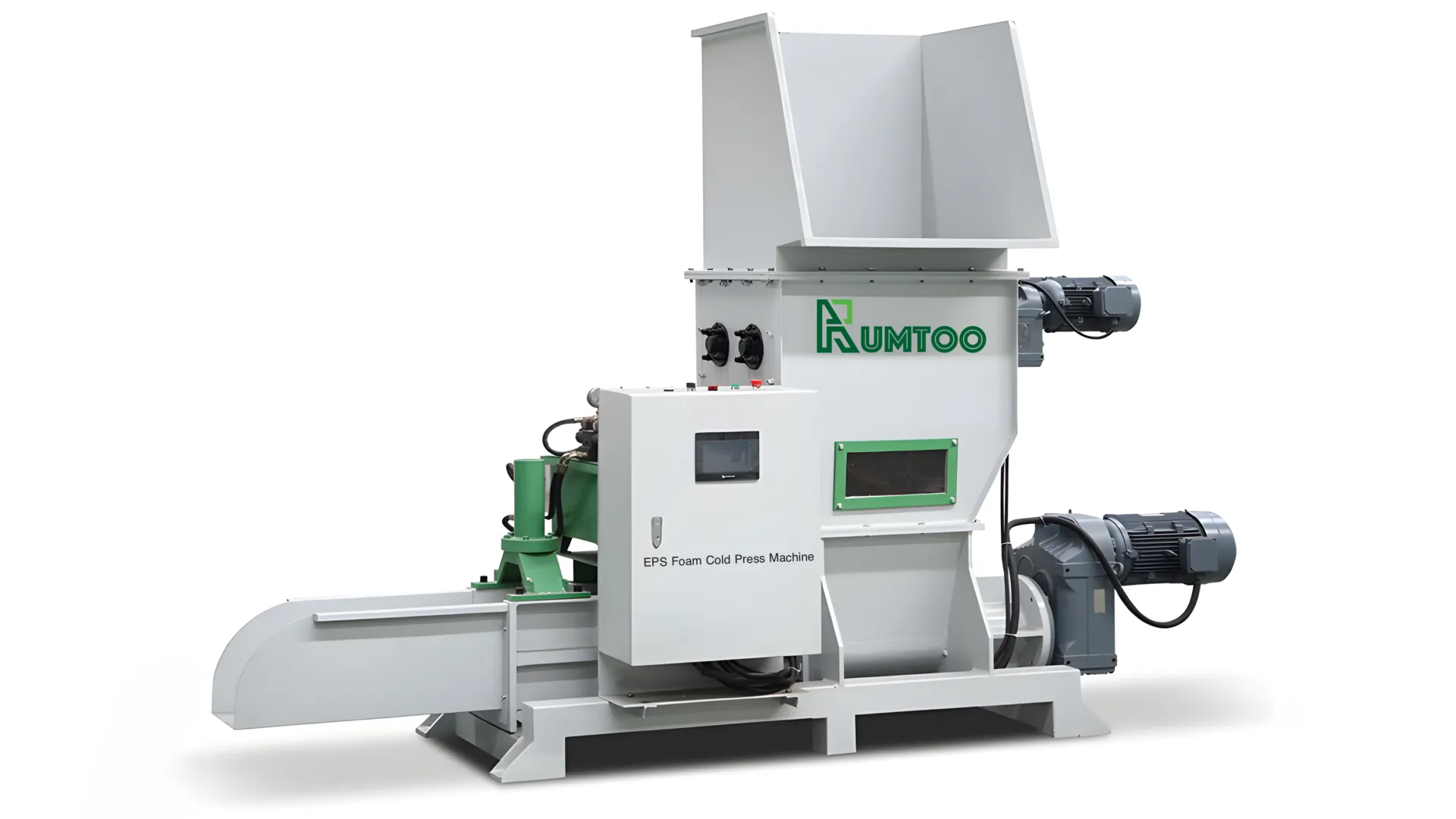EPS Foam
Cold Press Machine
Efficiently recycle and reduce the volume of EPS, EPE, EPP, XPS, and PUR foam waste. Turn bulky foam into dense, manageable blocks.
Get Custom QuoteWhy Choose Our EPS Foam Cold Press?
Versatile Material Processing
Handles various foam types like EPS, EPE, EPP, XPS, PUR including boxes, boards, trays, and cups for diverse applications.
High Compression Ratio
Compresses foam at ratios from 30:1 up to 50:1+, significantly reducing volume (to 150-250 kg/m³) and lowering transport/storage costs.
Cold Press Technology
No heat, chemical additives, or odors. Mechanical compression preserves material properties for easier recycling.
Automatic & Efficient
PLC-based automatic control for stable, consistent performance with minimal manual intervention and enhanced operator safety.
Compact & Integrated
Integrates shredding, compressing, and hydraulic systems, saving space and reducing energy consumption.
Durable & High Throughput
Robust construction with powerful motors (e.g., CP250 processes 80-150 kg/hr) for demanding environments.
Operational Workflow
Material Feeding
Foam waste (EPS, EPE, etc.) is fed into the machine’s input hopper for processing.
Shredding/Crushing
Integrated shredding blades break down bulky foam into smaller, manageable pieces.
Screw Compression
A powerful screw mechanism conveys and compresses the shredded foam, increasing its density.
Block Formation
Densified foam is extruded through a forming die, creating compact blocks or ingots.
Output & Collection
Compressed foam blocks are discharged for easy handling, storage, and transport for recycling.
See the EPS Cold Press in Action
Watch how our machine transforms voluminous foam waste into dense, recyclable blocks efficiently.
Core Components & Their Roles
Shredding System
Equipped with robust blades to pre-crush and break down large foam pieces into smaller fragments for efficient compression.
Screw Compressing Mechanism
A high-torque screw conveys and powerfully compresses the shredded foam, expelling air and significantly increasing material density.
Hydraulic System
Provides controlled pressure for consistent block formation and output density, ensuring uniform compressed blocks (on applicable models).
PLC Control System
Offers automated operation, parameter adjustment, and system monitoring for stable, efficient, and user-friendly performance.
Technical Specifications (Example: Model CP250)
| Parameter | Specification |
|---|---|
| Screw Diameter | Φ240 mm |
| Input Size | 900 x 600 mm |
| Screw Rotation Speed | 42 rpm |
| Crusher Blades | 9 + 10 sets |
| Blade Rotation Speed | 120 rpm |
| Main Motor Power | 7.5 kW |
| Crusher Motor Power | 2.2 kW x 2 |
| Hydraulic Motor Power | 1.5 kW |
| Product Size (Output Block) | 250 x 250 mm |
| Machine Weight | 1500 kg |
| Output Capacity | 80-120 kg/hour |
EPS Cold Press Machine Gallery




Request a Quote for Your EPS Cold Press
Tell us your foam recycling needs, and we’ll provide a tailored solution and competitive pricing.

